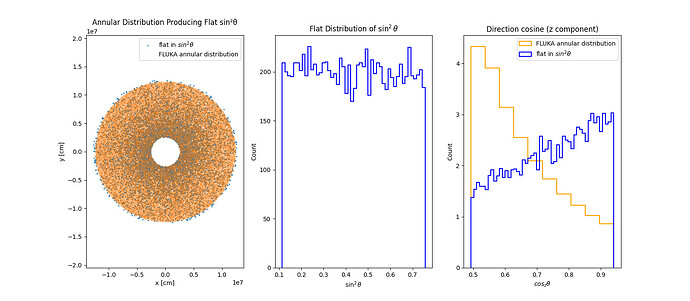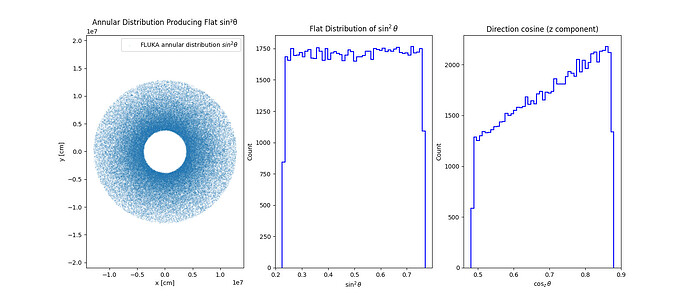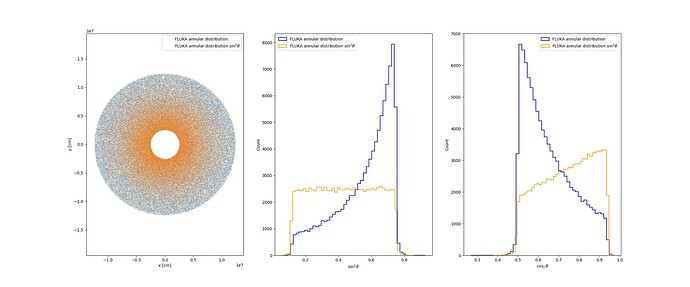Dear FLUKA experts,
I am using FLUKA to simulate the development of a cosmic-ray-induced air
shower in the Earth’s atmosphere and track the muon propagation several
meters underground. My simulation layout consists of a cylindrical
detector employing a 100th multilayered atmosphere up to about 70 km
above sea level, adding a few layers below the ground level. For the
cosmic ray injection, I am currently using the annular distribution
available in the source new gen file (5.2.3). My results are shown in
the attached figures. The first shows the annular distribution XY plane at the top of te atmosphere, and the second te sin^2 \theta distribution, obtained from the z-component director cosine
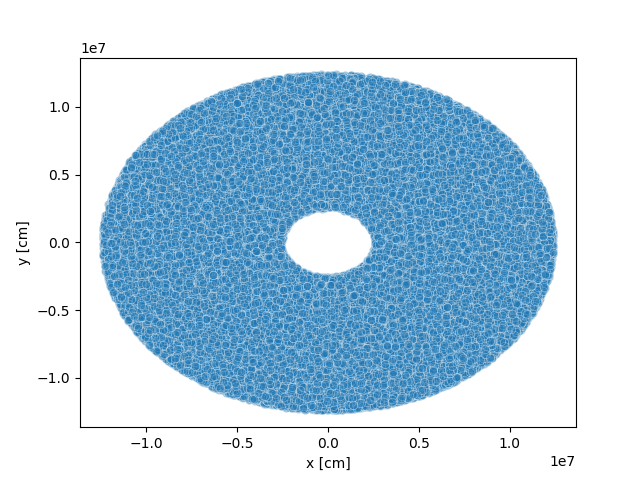
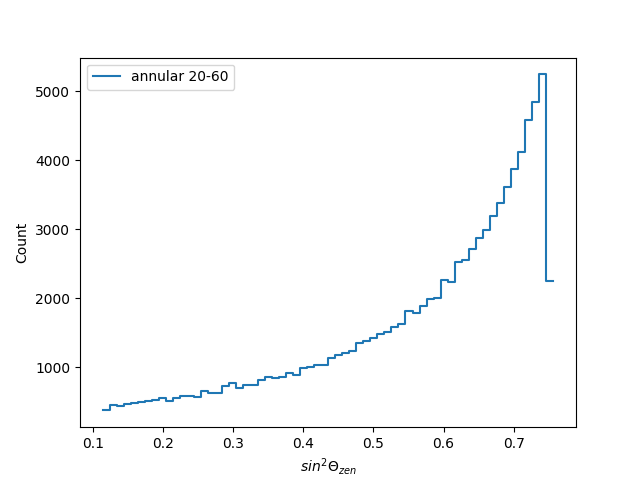
I aim to simulate cosmic rays entering the atmosphere with zenith
angles, theta, comprising 20 - 60 degrees. In such a case, in order to
reproduce the observations as seen by a plane detector, I expect to
inject these cosmic rays according to a flat distribution in sin^2 \theta
from the z-component director cosine. However, from my figure, using the
annular distribution, the injection points of cosmic rays seem to be
uniformly distributed over the whole area defined between r_min and
r_max. This distribution generates an excess of extensive air showers at
higher zenith angles when I would want the opposite. Is that the case?
In this sense, I would like to ask you if you have available a FLUKA
subroutine that generates a flat distribution in sin^2 theta.
I have attached a simplified input, usrdraw, and source_newgen to reproduce those results.
Also, a short code in Python to read the output since I am not using any Fluka Plot tool in this input.
annular_20_60.inp (2.7 KB)
usrdraw_fluka_forum.f (7.4 KB)
read_primaries_annular.py (678 Bytes)
source_newgen_anular_20_60.f (20.6 KB)
Many thanks!
All the best,
